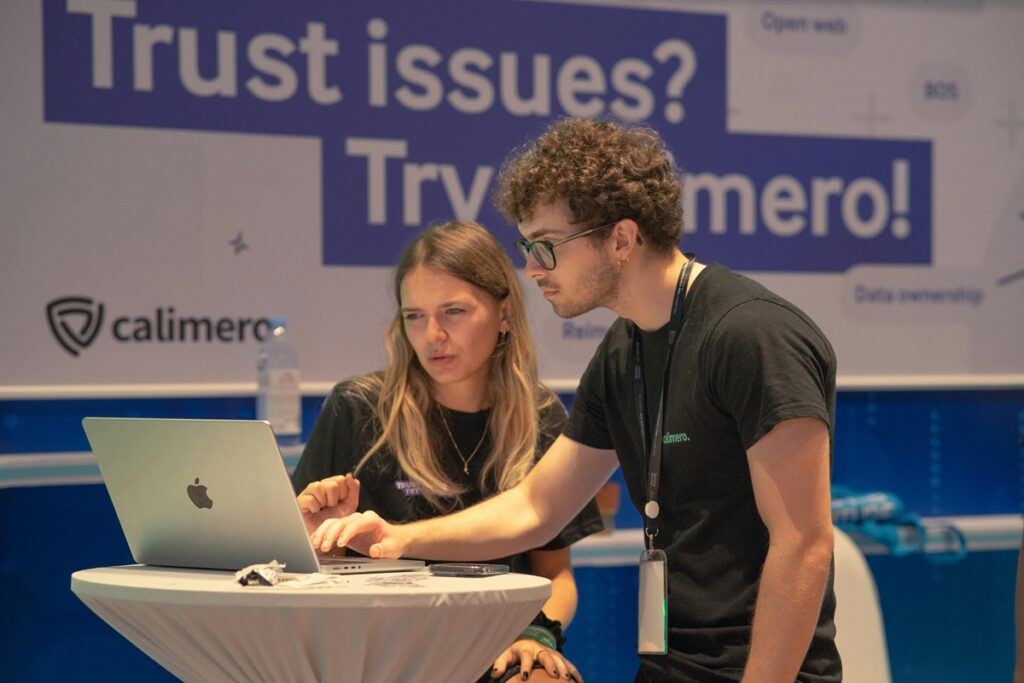Let’s cut to the chase. You’re here because your team feels… meh. Disengaged. Like they’re just punching a clock. And in a world where talent can bounce faster than a notification on a Gen Z’s phone, that’s a problem. A big problem.
Consider this: Companies with highly engaged employees see a 23% greater profitability. And it gets better or worse, depending on your current state. Disengaged employees cost U.S. companies an estimated $450-$550 billion per year in lost productivity. Those aren’t just numbers; they’re a gut punch to your bottom line.
The truth is, engagement isn’t about foosball tables and free snacks (though those can be nice perks). It’s about fostering a genuine connection, making people feel valued, and creating an environment where they want to contribute their best. So, what exactly is employee engagement?
What Is Employee Engagement?
Employee engagement goes beyond mere job satisfaction. It’s the emotional commitment an employee has to the organization and its goals. Engaged employees aren’t just showing up; they’re invested. They care about the outcome, they’re more productive, they’re more likely to stick around, and they become your best advocates.
Think of it like this: a satisfied employee might do the bare minimum. An engaged employee goes the extra mile, brings their creativity to the table, and actively seeks ways to improve things. It’s the difference between a cog in the machine and someone who’s helping to build a better machine.

Now, let’s ditch the theory and get into the trenches. Here are 12 employee engagement activities that aren’t just “fun” for the sake of it; they’re designed to build connection, boost morale, and ultimately drive results in 2025.
12 Effective Employee Engagement Activities for 2025
1. Organize Workplace Parties and Lunches
Ditch the forced fun. Work gatherings need a purpose. Think themed lunches that mix teams. This sparks hallway chats, the kind where real ideas brew. Quarterly wins deserve real cheers, building a sense of “we did this.”

Forget the usual pizza push unless it’s a team ritual. Potlucks show off cultures, connect people. Local food vendors? Good for them, good for us. Aim for genuine links, shared moments, not just ticking a “social” box. It’s about making people want to be there, not feel they have to. Make it less corporate, more human. Build bridges, not just break bread. Let the vibe be natural, not manufactured.
2. Arrange Employee Games and Tournaments
That dusty ping pong table? A start, maybe. Go wider. Online strategy games link remote folks and solve problems together without the pressure. Creative contests – photo, design – tap different brains, add some healthy fire.

Think outside the office walls. Volunteer sports leagues – cricket, badminton. This builds bonds beyond desks and fits different interests. Offer variety, make it appealing, not mandatory. It’s about finding common ground outside deadlines. Let people connect over shared play, not just shared tasks. Make it about fun, not just winning. Build camaraderie that lasts beyond the game.
3. Set Up Recognition Programs
“Employee of the month” is a relic. Build a system where peers shout out to peers, highlighting real value. Managers must give timely, specific praise, showing the impact of actions.

Public wins amplify impact, reinforce what matters. Go beyond “good job.” Detail the what and the why behind the nod. Make it real, frequent, about merit, not just tenure. It’s about seeing and valuing contributions, big and small. Let people know their work matters, tangibly. Make recognition a conversation, not just a plaque. Celebrate effort and impact, not just showing up.
4. Health and Wellness Programs
Don’t just preach well-being; make it real. Subsidized gyms, local fitness ties – that shows investment. Offer practical help: mindfulness, mental health access. Not a perk, a need.

Healthy cooking demos, help with good home office setups. The aim isn’t just fewer sick days. It’s a culture that values people’s whole selves, body and mind. It’s about building a foundation of well-being, not just fixing problems. Let people know you care about them as humans, not just workers. Make health a priority, not an afterthought. Invest in their future, not just their output.
5. Skill Swaps & Hackathons
Your team is more than job titles. “Skill swap” lets people share passions outside their roles. Unexpected links, new learning happen here. Marketing teaching coding? Engineer leading photography? Real synergy.

Hackathons on internal issues or wild ideas unlock creativity, mix departments. Not just about new ideas; it lets people contribute beyond their boxes, see their impact directly. It’s about tapping hidden talents and fostering cross-pollination. Let people explore their potential beyond their job description. Make learning and growth part of the culture. Encourage initiative and diverse contributions.
6. Provide Hybrid Work Options
In 2025, demanding butts-in-seats is old thinking. Good hybrid options aren’t a favor; they respect individual needs, modern work. Trust your team to deliver, wherever they are.

This flexibility shows respect, helps work-life balance. Less commute stress, more control often means happier, more loyal people. It’s about output, not optics. Judge by results, not by desk presence. Let people manage their lives and their work. Make trust the foundation, not control. Value contribution over location.
7. Incentivize Workplace Goals
Good pay is the baseline. Real drive goes deeper. Think beyond cash bonuses. Extra time off for big wins, chances for learning and growth.
Consider making goals into games with team rewards. Offer leading special projects as recognition. Link incentives to what matters: freedom, mastery, purpose, not just the next paycheck. It’s about tapping intrinsic motivation, not just extrinsic rewards. Let people feel a sense of ownership and achievement. Make the rewards meaningful, not just monetary. Connect goals to growth and opportunity.
8. Celebrate Cultural Events
Your team is a mix of backgrounds. Acknowledge and celebrate the cultural events that matter to your people. Days for sharing traditions, inclusive themed events, and space for open talks.

Make sure these celebrations are truly inclusive, driven by the team, not just HR. The goal: belonging and respect for the rich mix in your company. Avoid tokenism; aim for real understanding. It’s about recognizing and valuing the diversity within. Let people share their heritage and feel seen. Make it authentic, not just performative. Build bridges of understanding and appreciation.
9. Celebrate Holidays and Birthdays
Generic cards and stale cake feel like a chore, not a celebration. Encourage teams to personalize birthday and holiday wishes. A thoughtful note or small, relevant gift goes far.

Let teams plan their small celebrations within a budget. This builds ownership, makes it personal. The key: make people feel seen and valued as individuals, not just cogs. It’s about showing you notice them as people, not just employees. Let them feel appreciated for who they are. Make celebrations meaningful, not just routine. Acknowledge their presence and their individuality.
10. Organize Virtual Team Building Activities
Remote work needs intentional connection. Skip forced icebreakers, awkward virtual happy hours. Try engaging virtual escape rooms that require teamwork, online trivia on shared interests, and collaborative virtual art.
Focus on activities with a clear point: better communication, problem-solving, shared fun. The goal: bridge the distance, build real camaraderie among remote folks. Make it engaging, not draining. It’s about creating shared experiences despite the distance. Let people connect on a human level, not just a professional one. Make it interactive and enjoyable, not just another meeting. Build virtual bonds that feel real.
11. Form a Book Club
A company book club can drive shared learning, intellectual growth. Pick books on industry trends, leadership, and even personal growth. The value is in the talks, the different viewpoints.

Keep it voluntary, create a relaxed space for sharing thoughts. Not mandatory reading; it’s about a culture of continuous learning, connection through shared ideas. It’s about fostering intellectual curiosity and open dialogue. Let people learn and grow together, beyond their daily tasks. Make it a space for exploration and diverse perspectives. Encourage a culture of reading and reflection.
12. Collect Employee Feedback
Engagement is a two-way street. Ask for feedback often: anonymous surveys, quick check-ins, informal talks. But what you do with it is crucial.
Show you’re actively listening, making changes based on what people say. This proves their opinions matter, you’re committed to a better work environment. Ignoring feedback is a fast track to disengagement. It’s about creating a feedback loop that leads to real change. Let people know their voice is heard and valued. Make action the result of their input. Build a culture of continuous improvement based on their experiences.
Final Thoughts
In the end, employee engagement isn’t just a list of things to do. It’s about making a workplace where people feel valued, connected, and able to be their best. It means going beyond just doing things and building relationships, and creating a supportive place where people feel seen and heard.
Small, steady actions that put people first are what drive engagement, leading to a better, more creative, and more human workplace. Forget the quick fixes; focus on building real connections. That’s where lasting engagement – and real progress – happens. It’s about people, plain and simple.
